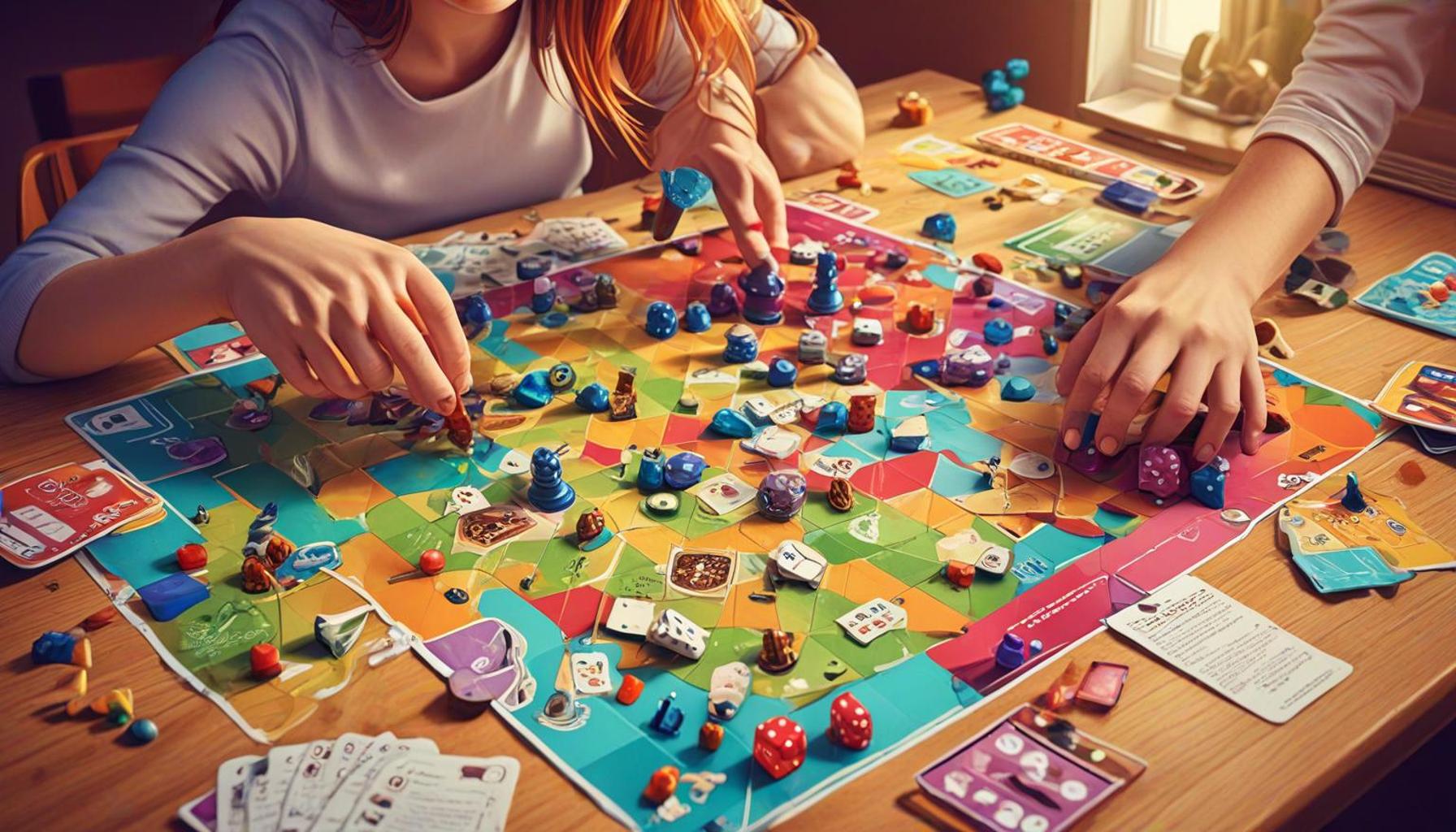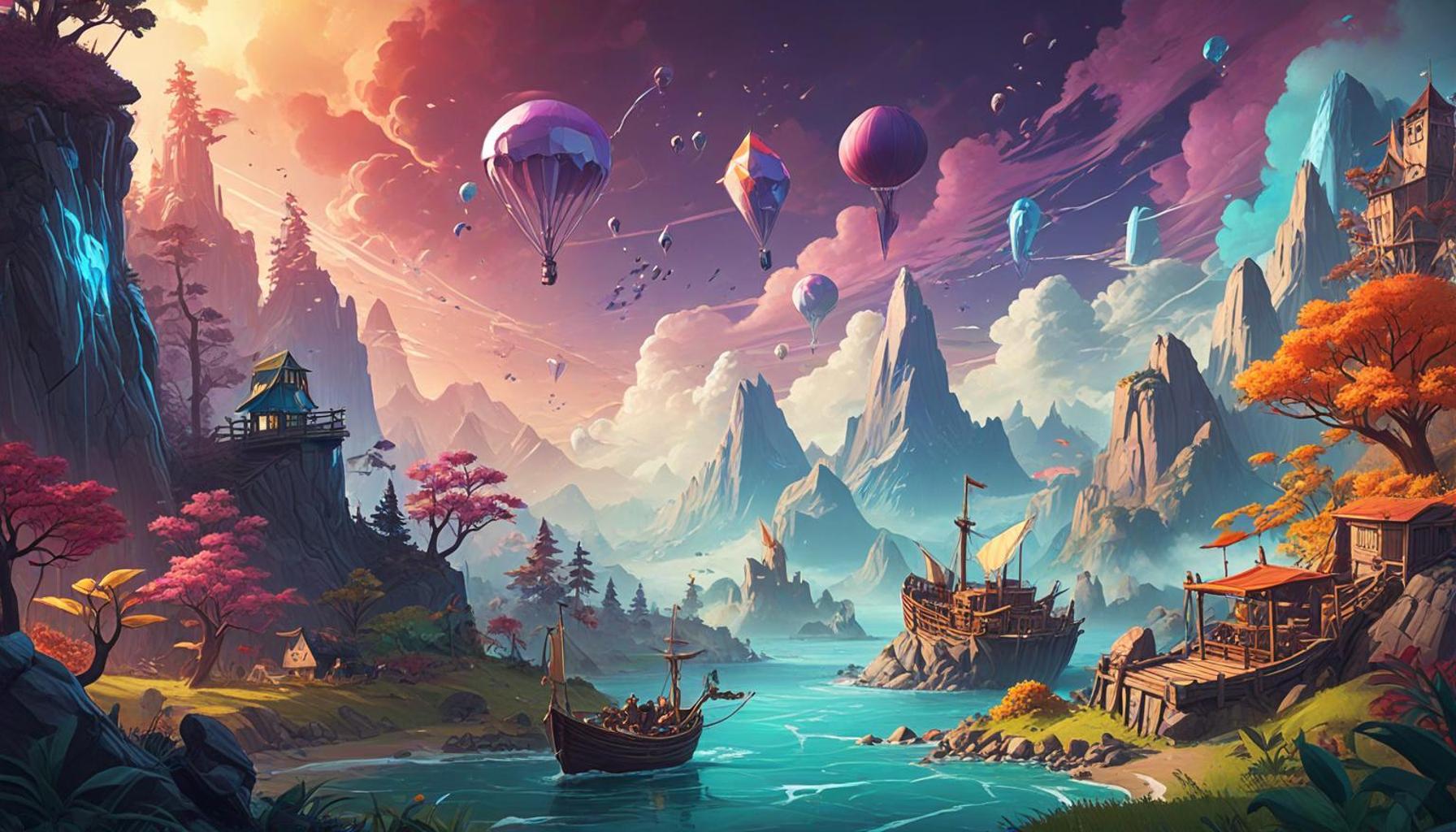The Impact of Game Dynamics on Innovation and Creativity in Business

The Role of Game Dynamics in Enhancing Business Innovation
In today’s hyper-competitive landscape, leveraging game dynamics has become a vital strategy for fostering innovation and enhancing creativity within organizations. By integrating elements of play, businesses can transform their approach to problem-solving and engage their teams in unique ways. This trend is not just a passing novelty; it is reshaping how industries operate and thrive.
Consider how various sectors have adopted these techniques:
- Education: Gamified learning platforms such as Khan Academy and Duolingo are revolutionizing how skills are developed and knowledge is exchanged. These platforms use badges, points, and leaderboards to encourage learners to progress, thereby making education not only more accessible but also more engaging. For instance, Nigerian schools are beginning to incorporate these technologies, motivating students through interactive quizzes and games that enhance critical thinking and retention of knowledge.
- Marketing: Companies like Airtel Nigeria are leading the way by using game mechanics to boost customer engagement through loyalty programs. Their “Airtel Tacha” initiative rewards customers with points for using services, which can then be redeemed for various perks. Such programs not only increase customer retention but also foster a competitive spirit among users, enhancing brand loyalty.
- Healthcare: Apps such as MyFitnessPal emphasize game dynamics to help patients manage their health while making activities more engaging. By integrating challenges and fitness goals, these applications encourage users to track their progress and achieve personal milestones, thereby promoting healthier lifestyles.
These examples illustrate that embedding game dynamics in business processes can lead to a culture that encourages experimentation and creativity. Such environments are crucial in a rapidly evolving marketplace where adaptability is key to survival.
As organizations recognize this potential, they will need to explore:
- What elements of gaming inspire motivation? For example, how can the thrill of achievement be replicated in work tasks?
- How can competition be utilized to drive innovation? By creating challenges that require teams to collaborate while sparking individual creativity, companies can foster a spirit of healthy competition.
- In what ways can collaboration be facilitated through playful interactions? Team-building exercises inspired by games can encourage open communication and collective problem-solving.
As we delve deeper into this topic, prepare to uncover how game dynamics can not only change the way we work but also the way we think about creativity in the business world. The implications are profound, suggesting that play is not just for children but a fundamental aspect of human interaction that can be harnessed to unlock the full potential of organizations, especially in a diverse marketplace like Nigeria. With innovation at the forefront, businesses have the opportunity to redefine their approach in a manner that resonates with contemporary needs and the aspirations of a growing workforce.
LEARN MORE: This related article may interest you
Unlocking Potential Through Game Dynamics
The integration of game dynamics has been shown to create a unique atmosphere that fosters innovation and creativity within organizations. By incorporating elements such as competition, rewards, and clear objectives, businesses can cultivate an engaging environment that encourages employees to think outside the box. This shift towards gamification is not merely about fun and games; it represents a profound change in how companies can harness the innate human desire for challenge and achievement.
One of the core elements of game dynamics is the use of achievement motivation. This intrinsic drive compels individuals to set and accomplish goals, be they small milestones or larger objectives. In a business setting, this can translate into a workforce that is more engaged and invested in their tasks. For instance, organizations utilizing platforms that reward employees for completing training or achieving project goals can see an uptick in participation rates and overall productivity. Research indicates that work environments that adopt these principles often report higher levels of employee satisfaction and creativity.
Moreover, game dynamics facilitate a sense of healthy competition among team members. This is particularly relevant in tech startups and innovative firms in Nigeria, where collaboration is essential yet competition can yield exceptional breakthroughs. For example, hackathons and innovation challenges organized by companies such as Flutterwave not only stimulate individual creativity but also encourage collaborative problem-solving. Participants are motivated to develop new solutions under time constraints, which can generate fresh ideas and innovations that may not surface in traditional meetings or brainstorming sessions.
Awareness of collaboration is another vital factor influenced by game dynamics. When playful interactions are embedded into the workflow, team members are more likely to engage with one another and share ideas openly. This can manifest through various formats, such as interactive workshops, gamified project management tools, or team-building exercises inspired by games. The resultant atmosphere promotes open communication and strengthens relationships, essential components for creative brainstorming and innovative practices.
As businesses reflect on these dynamics, several key aspects emerge that warrant further exploration:
- Goal Structuring: How can businesses structure their goals in a way that mirrors game mechanics, such as levels and challenges, to incentivize progress and achievement?
- Use of Rewards: What types of rewards—be they tangible or intangible—can be implemented to enhance motivation and keep employees engaged?
- Community Building: How can organizations foster a sense of community through game-like elements that promote social interaction and collaborative innovation?
By investigating these elements, companies can better understand how game dynamics can be strategically harnessed to stimulate both innovation and creativity. This approach to business not only invigorates the workplace environment but also aligns with the growing demand for adaptable and inventive solutions necessary in the ever-evolving global market, especially within Nigeria’s burgeoning economy.
The Integration of Game Dynamics in Business Processes
As companies strive to foster innovation and creativity, the integration of game dynamics into business processes has become increasingly significant. Game dynamics refers to the elements of game design that enhance user engagement, competition, and feedback mechanisms. These elements can be instrumental not only in product design but also in internal processes, motivating teams and facilitating collaboration. For instance, incorporating gamification elements such as point systems, leaderboards, and rewards within teams encourages a culture of creativity. Companies like Microsoft have implemented game dynamics in their product development cycles, incentivizing teams to contribute innovative ideas through competitive frameworks. This approach not only boosts employee motivation but also leads to a flood of creative solutions, ultimately enhancing the company’s ability to innovate. The feedback loops created through game elements allow for an iterative process in which ideas are constantly refined, resulting in a more agile and responsive business model.Furthermore, the application of game dynamics is not limited to internal processes; it profoundly affects customer interaction strategies. Businesses are learning to design experiences that are not only informative but also engaging. Customer loyalty programs that resemble games, where customers earn points and badges, drive higher engagement rates and contribute to brand loyalty.
Case Studies of Success
Examining successful case studies reveals the powerful impact of game dynamics on businesses’ innovation and creativity. Take Nike, for example, whose Nike+ platform transforms mundane exercise routines into competitive activities through challenges and social sharing. This integration not only motivates users but also encourages them to innovate their fitness strategies collaboratively with others.Moreover, platforms like Duolingo utilize game mechanics to enhance language learning, demonstrating that even educational platforms can thrive through innovative engagement techniques. The result is a community of learners who are both motivated and creative, showcasing the ripple effects of applying game dynamics to various business sectors. Continuing to explore such innovative applications of game dynamics will undoubtedly reveal new methodologies for enhancing creativity in business. As firms adapt to these techniques, they stay competitive in a rapidly evolving marketplace, proving that the intersection of entertainment and business can lead to unprecedented levels of innovation and growth.
CHECK OUT: Click here to explore more
Fostering a Culture of Experimentation
Building on the foundation of game dynamics, it becomes evident that fostering a culture of experimentation is critical for enhancing both creativity and innovation within businesses. In a landscape characterized by constant change and technological advancements, organizations that embrace risk-taking and experimentation can often outpace their competitors. By incorporating game-like elements, companies can create a safe environment where employees feel comfortable testing new ideas without the fear of significant repercussions.
A prime example of this can be seen in Nigerian fintech companies, where innovation is a necessity to stay relevant amidst rapid growth and a competitive market. Companies like Interswitch have established a culture that allows employees to prototype and pilot new solutions in a game-like setting. This encourages teams to iterate on their concepts quickly, iterate and fail fast — a method that mirrors game dynamics where players learn and adapt through trial and error. The result is a resurgence of ideas and approaches that might have never been discovered in a more rigid, traditional environment.
Feedback Loops and Continuous Improvement
Another aspect driven by game dynamics is the importance of feedback loops. Just as players in a game receive immediate feedback on their performance, employees benefit significantly from regular interventions regarding their work. This feedback can take the form of peer reviews, manager assessments, or even algorithm-driven analytics that provide insights on individual performance related to company goals.
In Nigeria, where time-sensitive decisions in sectors like agriculture technology can mean the difference between success and failure, implementing such feedback systems can accelerate innovative solutions. Startups often host feedback sessions after every project cycle, allowing team members to share positives and areas for improvement transparently. This culture encourages continuous optimization of ideas and solutions, thus further entrenching a mindset of innovation.
Integration of Technology and Engagement Platforms
The role of technology in embedding game dynamics within organizations cannot be overstated. With the rise of platforms that specialize in gamified project management, businesses can facilitate increased employee engagement while driving creativity. Technologies such as Trello or Asana, when infused with game elements, allow teams to visualize progress, set challenges, and even reward each step attained towards their goals.
Utilizing the cultural nuances of Nigeria, companies can localize these tools to resonate more with their workforce, thereby enhancing motivation and creativity. Employee engagement platforms that integrate traditional Nigerian games or themes can resonate with employees, establishing a mix of familiarity and innovative thinking. Such integrations spark peers to not only aim for individual accomplishments but also to support communal goals that uplift the entire team.
Measuring Impact and Success
As businesses embark on this journey of incorporating game dynamics, measuring the impact of these strategies becomes paramount. Implementing metrics to gauge creative output, innovation rates, and employee satisfaction can help organizations tweak their approaches. Moreover, tools such as surveys and data analytics can offer valuable insights, guiding business leaders to iteratively refine their gamification strategies.
In a dynamic market like Nigeria’s, where creativity fuels progress in various sectors like agriculture, tech, and manufacturing, organizations that successfully measure the impact of game dynamics are better positioned to pivot according to market demands. By fostering a culture built around experimentation, feedback, and engagement, businesses can nurture an ecosystem that not only embraces innovation but thrives on it.
YOU MAY ALSO LIKE: Read read another article
Conclusion
In conclusion, the impact of game dynamics on innovation and creativity in business cannot be overstated, particularly within the vibrant Nigerian market. As organizations face the relentless pace of change and competition, integrating game-like elements into corporate practices provides a strategic advantage. By fostering a culture that embraces experimentation, businesses empower their teams to explore uncharted territories without fear, allowing for rapid prototyping and iterative development.
Feedback loops play a crucial role in this dynamic, offering employees vital insights and enhancing their engagement. Regular assessments and collaborative feedback mechanisms create an atmosphere where innovation is not just welcomed but celebrated. This ongoing dialogue nurtures a resilient workforce that continuously strives for improvement, making creativity a shared goal and fostering a sense of community.
Moreover, the integration of technology serves as a catalyst for engagement. Platforms that incorporate gamification not only motivate employees but also align their efforts with overarching organizational objectives. Tailored solutions that resonate with the unique cultural context of Nigeria further enhance the application of game dynamics, transforming traditional workflows into exciting challenges that ignite creativity and drive collective achievements.
Ultimately, measuring the success of these strategies is paramount for sustained growth. By analyzing creative output, employee satisfaction, and innovation rates, businesses can refine their approaches and cultivate an ecosystem where creativity thrives. As Nigeria continues to be a hub for ingenuity across various sectors, organizations that harness the power of game dynamics will be well-positioned to lead the charge into an innovative future, setting themselves apart in an ever-evolving marketplace.


